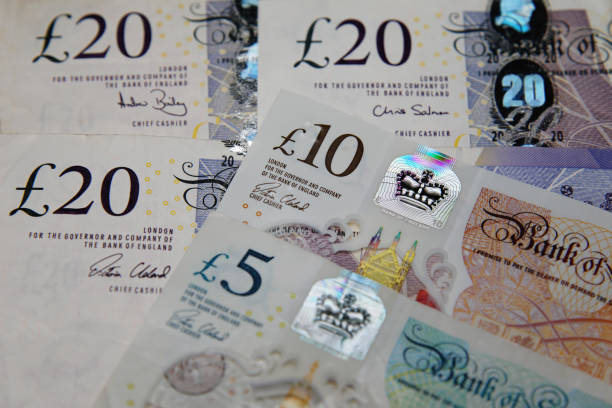Decentralized Finance, often referred to as DeFi, has rapidly transformed the financial landscape in recent years. This emerging ecosystem is built on blockchain technology and aims to eliminate traditional financial intermediaries, giving individuals more control over their assets. DeFi represents a significant shift from conventional banking and financial systems, introducing a range of innovative tools
Decentralized Finance, often referred to as DeFi, has rapidly transformed the financial landscape in recent years. This emerging ecosystem is built on blockchain technology and aims to eliminate traditional financial intermediaries, giving individuals more control over their assets. DeFi represents a significant shift from conventional banking and financial systems, introducing a range of innovative tools and services. This article delves into the growth of Decentralized Finance, its advantages, challenges, and future potential. We will also compare it with traditional finance and analyze its impact on the broader financial ecosystem.
What is Decentralized Finance (DeFi)?
Decentralized Finance, or DeFi, is an umbrella term for a variety of financial applications that rely on blockchain technology, particularly smart contracts. Smart contracts are self-executing contracts with the terms of the agreement directly written into code. Unlike traditional finance, where banks, brokers, and institutions act as intermediaries, DeFi operates without middlemen, allowing for peer-to-peer transactions directly between users.
DeFi includes services such as lending, borrowing, trading, and yield farming. Platforms like Ethereum have been pivotal in enabling this new financial frontier, as their decentralized applications (dApps) allow users to interact without intermediaries.
The Rapid Growth of DeFi
The growth of DeFi has been nothing short of explosive. From the early days of blockchain technology, when Bitcoin first introduced a decentralized currency, the concept of decentralizing financial services quickly gained traction. By mid-2023, the total value locked (TVL) in DeFi protocols had surged to over $200 billion, indicating both the increasing popularity and trust in these systems.
Key factors contributing to this growth include:
- Blockchain Maturity: The blockchain technology that supports DeFi has matured, becoming more secure and scalable.
- Increased Investor Interest: Investors are drawn to the high yields often available in DeFi platforms, especially when compared to traditional finance products.
- Global Access: DeFi opens financial services to anyone with an internet connection, providing access to the unbanked or underbanked populations around the world.
Advantages of Decentralized Finance

Image by Gerd Altmann from Pixabay
DeFi has gained prominence due to its numerous advantages over traditional financial systems. Here are some key benefits:
- Elimination of Intermediaries: DeFi removes the need for banks, brokers, and other financial intermediaries. This not only reduces costs for users but also increases the speed of transactions.
- Increased Transparency: Since DeFi platforms run on public blockchains, every transaction is visible to anyone. This level of transparency increases trust among users and reduces the likelihood of fraud.
- Accessibility: DeFi services are accessible to anyone, regardless of geographical location or socio-economic status. This is especially beneficial in regions where traditional banking infrastructure is lacking.
- Ownership and Control: With DeFi, users maintain full ownership of their assets. They do not have to rely on a bank or institution to safeguard their funds.
- Innovation and Flexibility: DeFi platforms offer a wide range of financial services, including lending, borrowing, trading, and insurance, often with more competitive rates than traditional financial institutions.
Challenges and Risks in DeFi
Despite its rapid growth and promise, Decentralized Finance faces several challenges and risks:
- Regulatory Uncertainty: One of the most significant hurdles for DeFi is the lack of regulatory clarity. Governments and regulatory bodies are still grappling with how to regulate this new financial system. This uncertainty creates risks for users and platforms alike.
- Security Concerns: DeFi platforms are built on blockchain, which is generally secure. However, vulnerabilities in smart contracts can lead to hacks and exploits. Several high-profile attacks have resulted in the loss of millions of dollars.
- Volatility: The DeFi ecosystem is often tied to highly volatile cryptocurrencies. Sudden market shifts can lead to large-scale liquidations, affecting the stability of the system.
- Complexity: For many users, DeFi platforms can be complex and difficult to navigate. The user experience is often not as streamlined as traditional banking, which may deter mainstream adoption.
- Scalability Issues: While blockchain technology is improving, current platforms can still struggle with transaction speed and costs during periods of high demand.
DeFi vs Traditional Finance: A Comparative Analysis
| Feature | Decentralized Finance (DeFi) | Traditional Finance |
|---|---|---|
| Intermediaries | No intermediaries, peer-to-peer transactions | Multiple intermediaries (banks, brokers, etc.) |
| Accessibility | Global access to anyone with an internet connection | Limited by geography and regulations |
| Transparency | Full transparency, all transactions visible on the blockchain | Limited transparency, institutions control records |
| Ownership | Users have full control and ownership of their assets | Assets are controlled by financial institutions |
| Security | Secured by blockchain but vulnerable to smart contract bugs | Highly regulated and insured, but centralized |
| Interest Rates | Often higher interest rates and yields for investors | Traditional savings and loans with lower returns |
| Regulation | Largely unregulated, uncertain legal environment | Heavily regulated by governments and agencies |
| User Experience | Can be complex, requiring technical knowledge | User-friendly with well-established procedures |
| Transaction Speed | Fast but may slow down with network congestion | Often slower due to manual checks and approvals |
Future Potential of DeFi
The future of Decentralized Finance looks promising, with several trends indicating continued growth:
- Integration with Traditional Finance: As DeFi matures, we are likely to see greater integration with traditional financial systems. Banks and other financial institutions are already exploring ways to leverage blockchain technology to streamline their services.
- Enhanced Security Protocols: Developers are continuously working to improve the security of DeFi platforms. Enhanced security protocols, better auditing of smart contracts, and decentralized insurance products are all part of the future landscape.
- Scalability Solutions: To overcome the current scalability issues, several blockchain networks are working on second-layer solutions, such as Ethereum’s Layer 2 technology. These innovations will increase the speed and reduce the cost of transactions.
- Greater Regulatory Clarity: As DeFi continues to grow, it will attract more attention from regulators. While this may create challenges, it could also bring greater legitimacy to the space, encouraging broader adoption by institutional investors.
- Tokenization of Assets: In the future, we may see more real-world assets tokenized on DeFi platforms, allowing for the fractional ownership and trading of everything from real estate to fine art.
Analysis Table: Key Growth Factors of DeFi
| Growth Factor | Description | Impact on DeFi |
|---|---|---|
| Blockchain Maturity | The development of secure and scalable blockchain protocols | Facilitates broader adoption and innovation |
| Investor Demand | High interest from retail and institutional investors seeking higher yields | Increased liquidity and user base |
| Accessibility | DeFi’s ability to reach users worldwide, especially in underbanked regions | Expands global financial inclusion |
| Technological Innovation | Rapid advancements in smart contracts, dApps, and blockchain infrastructure | Drives new use cases and applications |
| Regulatory Attention | Growing focus from regulators as DeFi gains prominence | May result in greater legitimacy and legal clarity |
DeFi and Financial Inclusion
One of the most significant impacts of Decentralized Finance is its potential to promote financial inclusion. In many parts of the world, particularly in developing regions, traditional banking services are either inaccessible or expensive. DeFi bridges this gap by providing financial services to anyone with an internet connection, regardless of their location or income. It empowers individuals to manage their finances without the need for a bank account or approval from financial institutions. By enabling access to basic financial tools like loans, savings, and insurance, DeFi can potentially uplift millions of unbanked people, offering them the same financial opportunities as those in more developed regions.
Decentralized Lending and Borrowing
DeFi has revolutionized the way lending and borrowing work by introducing decentralized lending platforms. These platforms enable users to lend their assets to others and earn interest without the need for a traditional bank. Borrowers can access loans by providing cryptocurrency as collateral, bypassing credit checks or lengthy approval processes. This system has made it easier for individuals to access liquidity in times of need, while also offering lenders better returns compared to traditional savings accounts. The peer-to-peer nature of DeFi lending not only enhances efficiency but also democratizes access to credit markets, making it more inclusive for people worldwide.
The Role of Stablecoins in DeFi
Stablecoins, cryptocurrencies that are pegged to traditional currencies like the U.S. dollar, have played a critical role in the growth of DeFi. Unlike volatile cryptocurrencies such as Bitcoin or Ethereum, stablecoins provide price stability, which is essential for many DeFi applications, including lending, borrowing, and payments. Platforms use stablecoins to offer predictable returns on investments, enabling users to interact with DeFi systems without worrying about drastic price fluctuations. By integrating stablecoins into the ecosystem, DeFi platforms ensure that users can participate in a more stable financial environment while still benefiting from the advantages of blockchain technology.
DeFi and Tokenization
Tokenization is another exciting development within the DeFi ecosystem. It refers to the process of converting real-world assets, such as real estate, stocks, or commodities, into digital tokens on the blockchain. Tokenization allows fractional ownership, meaning that users can own small portions of valuable assets that would otherwise be out of reach. For example, instead of needing millions to invest in a property, a user can purchase a small share of a tokenized property for a fraction of the cost. This democratizes access to investment opportunities, allowing people from all economic backgrounds to diversify their portfolios and participate in global markets.
Conclusion
Decentralized Finance (DeFi) represents a new frontier in the world of finance. It offers numerous advantages over traditional financial systems, such as increased transparency, accessibility, and the elimination of intermediaries. However, it also faces challenges, including regulatory uncertainty, security risks, and scalability issues. Despite these obstacles, the growth of DeFi shows no signs of slowing down, and its future potential is vast. As technology improves and the industry matures, DeFi could revolutionize how we manage and interact with financial systems.
















